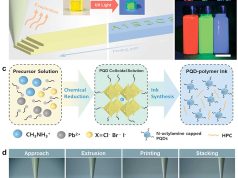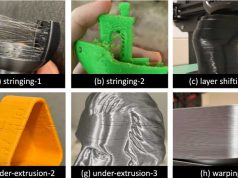Researchers at Sandia National Laboratories have developed a new 3D printing process called SWOMP (Selective Dual-Wavelength Olefin Metathesis 3D Printing). This enables the production of particularly strong olefin-based plastic components – at record-breaking speed.
The SWOMP process uses two wavelengths for simultaneous exposure of the build volume. UV and blue light selectively cure the liquid olefin resins and prevent them from sticking to the base of the container. This drastically shortens printing cycles – up to five times faster than conventional 3D printing methods.
“It opens up a whole new world for usable 3D printing materials,” explains materials scientist Samuel Leguizamon, who led the development. The focus was on processing the olefin dicyclopentadiene – a substance frequently used in paints and flame retardants. In contrast to the otherwise common acrylates, the resulting polymers are characterized by significantly increased strength and toughness properties.
The Sandia researchers expect SWOMP to open up numerous new applications for 3D printing – from aerospace and automotive to military applications. Leguizamon can certainly imagine the production of fusion components. The technology should also enable decentralized, on-site production. The team is already in contact with users from various sectors, such as the Lawrence Livermore National Laboratory.
Subscribe to our Newsletter
3DPresso is a weekly newsletter that links to the most exciting global stories from the 3D printing and additive manufacturing industry.


























